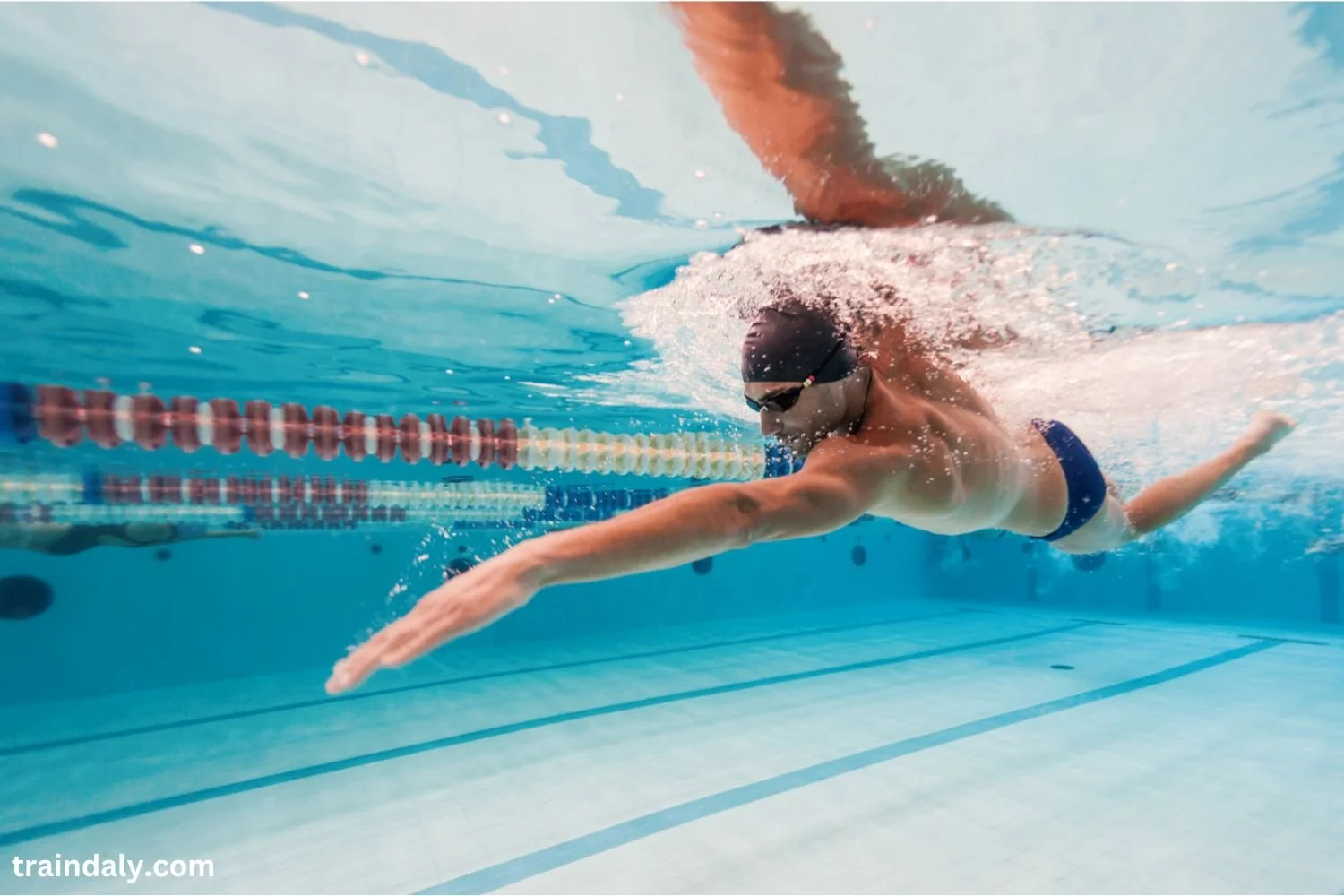Tapping into Muscle Mass - Type 1 vs Type 2 Muscle Fibers
/Want to swim stronger, run longer, or lift heavier? It all starts with understanding what your muscles are made of—and how to train them right.
Your body is packed with thousands of muscle fibers, each playing a unique role in how you move, perform, and grow. The secret sauce? Learning how to train both type 1 and type 2 fibers so you can tap into all your potential—whether you're gunning for a faster 100m freestyle or crushing a long-distance open water swim.
Let’s break it down.
What Are Muscle Fibers?
Muscle fibers are the building blocks of muscle tissue. They are responsible for generating the force and endurance needed for various physical activities. Broadly, these fibers are categorized into two main types: type 1 (slow-twitch) and type 2 (fast-twitch). Each fiber type serves a unique purpose and is activated during different forms of exercise. Here's a breakdown of the two types:
Type 1 Muscle Fibers: The Endurance Powerhouses
Type 1 fibers, often referred to as slow-twitch muscle fibers, are designed for sustained, low-intensity activities. These fibers have a high capacity for oxygen uptake, allowing them to perform for extended periods without fatiguing. They are primarily used during aerobic activities, where oxygen plays a critical role in energy production. Examples of activities that rely on type 1 fibers include:
Distance running
Cycling
Key Characteristics of Type 1 Muscle Fibers:
High endurance
Slower contraction speed
Utilizes oxygen for energy (aerobic metabolism)
Fatigue-resistant
For those wondering what type of muscle fibers will be stimulated during activities such as distance swimming, the answer is type 1. These fibers allow swimmers to maintain a steady pace over long distances.
Type 2 Muscle Fibers: The Power Generators
Type 2 fibers, or fast-twitch muscle fibers, are all about speed and strength. They provide the quick bursts of power needed for high-intensity, short-duration activities. Type 2 fibers are further divided into two subtypes: type 2a and type 2b. While type 2a offers a mix of power and endurance, type 2b is exclusively focused on explosive strength.
These fibers come into play during anaerobic activities, where energy is generated without oxygen. Examples include:
Sprinting
Jumping
Short-distance swimming or butterfly strokes
Looking to improve your butterfly stroke? In this video, Coach Dan Daly demonstrates 5 effective drills you can do in just 10 minutes before or after your next swim session.
Key Characteristics of Type 2 Muscle Fibers:
High-intensity power output
Rapid contraction speed
Anaerobic energy production
Fatigues quickly
Type 1 Muscle Fibers vs Type 2: Key Differences
When comparing type 1 vs type 2 muscle fibers, the main distinctions lie in their energy sources, speed of contraction, and fatigue resistance.
| Feature | Type 1 Muscle Fibers | Type 2 Muscle Fibers |
|---|---|---|
| Contraction Speed | Slow | Fast |
| Energy System | Aerobic (uses oxygen) | Anaerobic (no oxygen) |
| Fatigue Resistance | High | Low |
| Best For | Endurance activities | Power and strength tasks |
Understanding these differences helps you design a training program that targets both fiber types effectively.
What Muscle Fibers Are Used in Swimming?
Swimming is a mixed bag—it’s both an endurance and power sport. That means it recruits both fiber types:
Distance swimming? Mostly type 1.
Sprint sets, starts, turns, or butterfly? That's where type 2 kicks in.
So whether you’re grinding out a 1500m or crushing a 50m sprint, swimming works your entire muscular system—if you train smart.
How to Train Each Muscle Fiber Type
To reach your peak, you need to activate and challenge both fiber types consistently.
Train Type 1 (Endurance)
Light weights, high reps (15–25 reps)
Steady-state cardio: rowing, cycling, jogging
Goal: build stamina, aerobic efficiency, and long-lasting performance
Train Type 2 (Power & Speed)
Sprint intervals (swim, run, or bike)
Heavy resistance training (4–6 reps)
Plyometrics: jump squats, box jumps, starts off the blocks
Goal: increase explosive strength and speed
Balancing Type 1 vs Type 2 Muscle Fibers in Your Workouts
Neglecting either fiber type creates performance gaps.
To maximize your physical potential, a balanced approach to training is essential. Overemphasis on one fiber type can limit your overall performance. Here’s how to strike the right balance:
Combine endurance and strength training: Alternate between workouts that focus on aerobic capacity and anaerobic power.
Periodization: Plan your training in phases to emphasize different goals, such as endurance during one phase and strength during another.
Cross-training: Engage in a variety of activities like swimming, running, and resistance training to target both fiber types.
Understanding the differences between type 1 muscle fibers vs type 2 is key to designing a well-rounded fitness program. Whether your goal is to excel in endurance sports like distance swimming or improve your explosive power for sprinting, tailoring your training to activate both fiber types is essential.
✅ Dryland Training = Total Muscle Activation
Want to level up faster? Try our Dryland Training Programs to strengthen your fast- and slow-twitch fibers without even getting wet.



